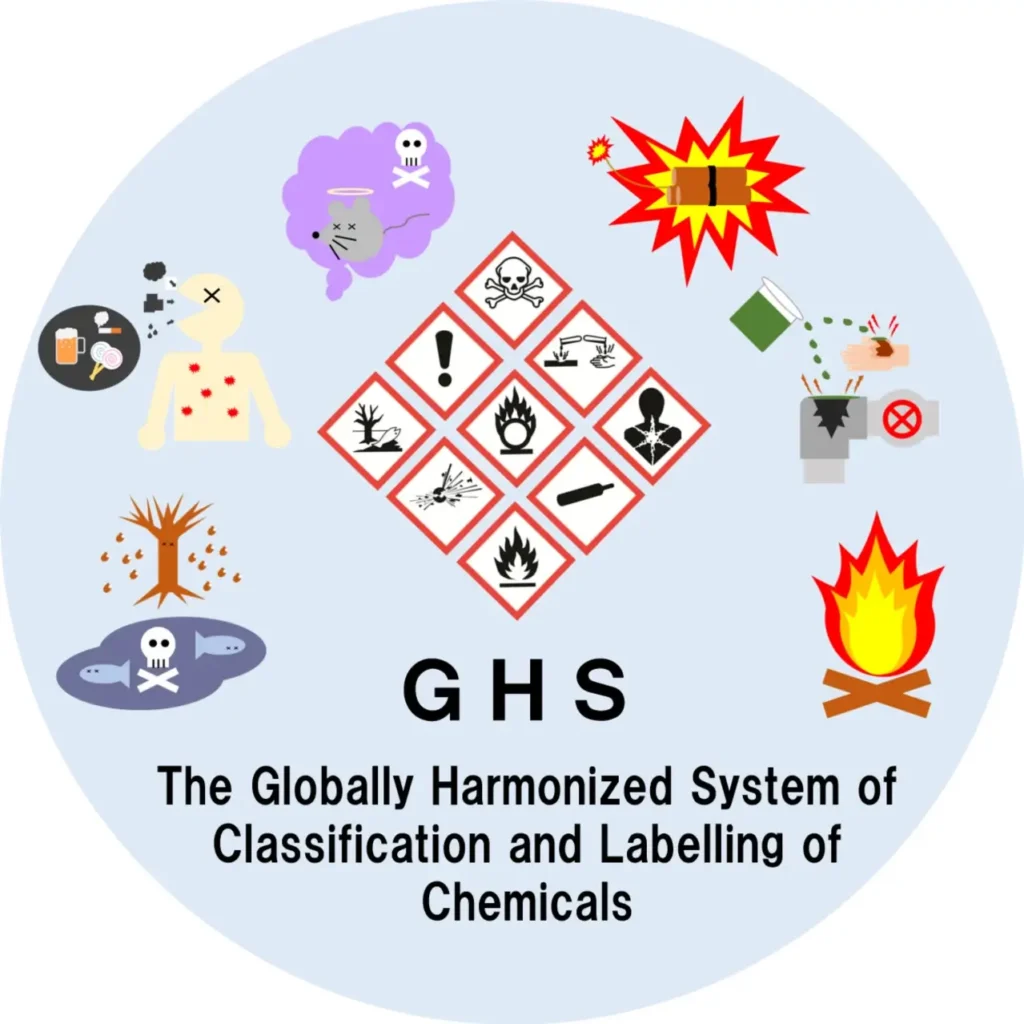Home/Get In Touch/GHS
GHS
What is GHS?
GHS, or the Globally Harmonized System of Classification and Labeling of Chemicals, is an international framework designed to improve hazard communication concerning chemicals. It establishes consistent criteria for classifying chemical hazards and provides a standardized format for labeling and Safety Data Sheets (SDS).
Who is Affected by GHS?
GHS impacts any organization that handles chemicals in the workplace. Employers with hazardous chemicals must ensure that labels and SDS are provided for all relevant substances and must train employees on safe practices for handling these chemicals.

Key Components of GHS:
Hazard Classification: Clear criteria for determining the classification of chemicals based on their health and physical hazards, including combinations (mixtures).
Hazard Symbols: A set of standardized symbols that visually convey the nature of hazards associated with chemicals.
Labeling Requirements: Mandatory elements for labels, such as a harmonized signal word, pictograms, hazard statements, and precautionary statements.
Safety Data Sheet (SDS) Requirements: A specified 16-section format for SDS that outlines key information regarding the safe handling and use of hazardous chemicals.
Major Changes to the Hazard Communication Standard:
Hazard Classification: Updated definitions and criteria for classifying health, physical hazards, and mixtures to ensure consistency and accuracy across manufacturers.
Labeling: Chemical manufacturers and importers are required to include standardized elements on labels, such as signal words, pictograms, and specific hazard statements related to each hazard category.
Safety Data Sheets (SDS): SDS must follow a standardized 16-section format to improve clarity and accessibility of critical safety information.
Where to Find More Information:
For further details on the Hazard Communication Standard and GHS, visit OSHA’s GHS page.

